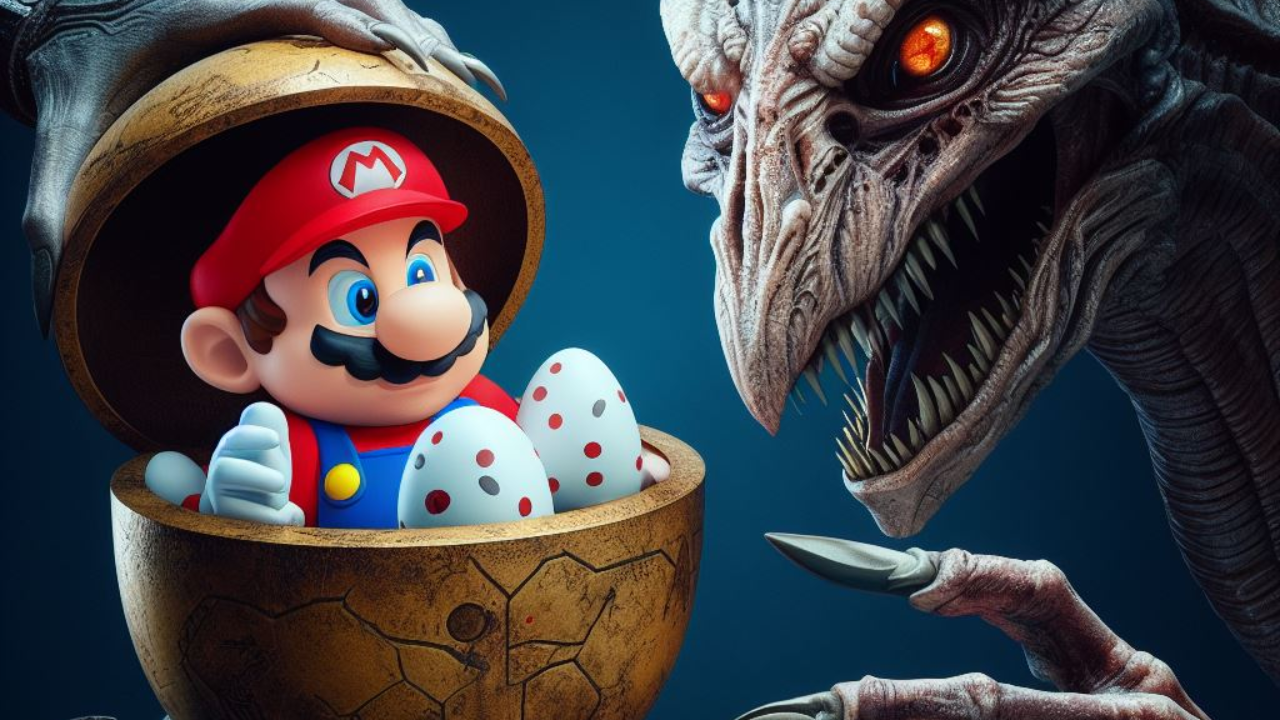
The Super Mario franchise, a cornerstone of Nintendo's legacy, is known for its whimsical and engaging gameplay. Over its 35-year history, the series has included a plethora of hidden treasures and references, some of which are particularly unusual due to their unexpected nature or seeming disconnect from the rest of the game.
1. Mario's Wardrobe in Super Mario Odyssey
In "Super Mario Odyssey," a groundbreaking installment for the Nintendo Switch released in 2017, Mario's new abilities are showcased. Players are delighted by Mario's ability to transform into various enemies using Cappy. An intriguing aspect is Mario's varied wardrobe, with some outfits, like the Japanese Noble and Samurai Wear, first appearing in a 2016 Club Nintendo reward, a desk calendar.
The Uniqueness of Outfits
These outfits are not just visual elements; they represent a deeper connection to Nintendo's creative history, showing the company's penchant for intertwining various aspects of its culture and gaming lore.
2. Sirena Beach in Super Mario Sunshine
"Super Mario Sunshine," launched for the GameCube in 2002, introduced players to Sirena Beach, a location with a unique design. The arrangement of pools and huts mirrors a GameCube controller, and the hotel resembles the console itself. This clever design choice reflects Nintendo's attention to detail and love for Easter eggs.
Symbolism in Design
This easter egg is a tribute to the GameCube and demonstrates the developers' ingenuity in integrating console elements into the game world creatively.
3. The Super Mario Bros. Movie (2023) Easter Eggs
The animated "Super Mario Bros. Movie" is packed with hidden references, like "Link St." and “Hanafuda Avenue,” nodding to Nintendo's history and other franchises. This movie serves as a celebration of Nintendo's extensive universe, offering a treasure trove for fans to explore.
Hidden Layers of References
These references not only honor Nintendo's history but also create a rich, interconnected universe that fans appreciate.
4. Names of the Koopalings
The Koopalings, first appearing in "Super Mario Bros. 3" on the NES, were named by Nintendo employee Dayvv Brooks after famous musicians. This unique naming convention added a layer of cultural reference to the game, bridging the gap between gaming and music.
Cultural Crossover
The naming of the Koopalings is a testament to Nintendo's creativity and willingness to blend different cultural elements into its games.
5. Map of Japan in Super Mario Bros. 3
In "Super Mario Bros. 3," the map of Water Land subtly resembles Japan, with the castle positioned where Kyoto, Nintendo's headquarters, is located. This geographical Easter egg pays homage to Nintendo's roots and the country's rich cultural heritage.
Geographical Tribute
The inclusion of a map resembling Japan is a subtle nod to Nintendo's origins and its deep connection to Japanese culture.
6. News Bulletins in The Super Mario Bros. Movie (2023)
The movie includes numerous references to other Nintendo games, like "Ice Climber" and "Metroid." These bulletins expand the Mario universe, hinting at a shared world with other beloved Nintendo characters.
Expanding the Mario Universe
These references not only add depth to the movie's universe but also create a sense of a larger, interconnected world within Nintendo's games.
7. Melons Replace Coconuts in Super Mario Galaxy
In "Super Mario Galaxy," achieving 9,999 Star Bits transforms green coconuts into watermelons, a whimsical and unexpected change. This quirky transformation adds an element of surprise and delight to the gameplay.
Whimsical Gameplay Changes
The switch from coconuts to watermelons is a playful twist that adds an unexpected element to the game, showcasing Nintendo's love for fun and surprise.
8. The N&B Block in Super Mario Land 2: 6 Golden Coins
In this Game Boy title, an "N&B" block references Nintendo's own toy line, a competitor to LEGO. This Easter egg highlights Nintendo's history beyond video games, showcasing its diverse product history.
Nintendo's Rich History
The N&B block is a reminder of Nintendo's varied past, illustrating the company's evolution over the years.
9. MIPS in Super Mario 64
MIPS, the pet rabbit in "Super Mario 64," is named after the Nintendo 64’s microprocessor. This technical Easter egg is a clever nod to the hardware that powered the game, linking the game world with its underlying technology.
Technical Tribute
Naming MIPS after the microprocessor is a subtle yet intelligent way to honor the technology that brought the game to life.
10. Shiverburn Galaxy in Super Mario Galaxy 2
In this galaxy, players can spot three mysterious figures resembling Kodama from Japanese mythology. This eerie inclusion adds a layer of mystique and cultural reference to the game.
Cultural and Mythological References
The inclusion of Kodama-like figures in the game is a testament to Nintendo's willingness to infuse its games with elements of Japanese folklore and mythology.
Conclusion and Final Thoughts
These Easter eggs demonstrate Nintendo's dedication to creating rich, layered gaming experiences filled with surprises and cultural references. They add depth and intrigue to the Super Mario franchise, making each game a treasure hunt for keen players.
Also Read:
https://news.thebadgamer.in/news/top-10-weirdest-mario-easter-eggs-in-gaming-history/
Comments
Post a Comment